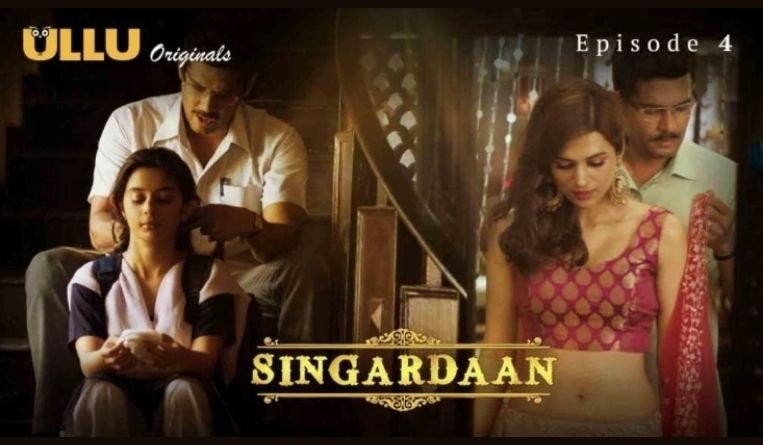Idea vs. Expression in India copyright suit
20 October 2020

Shamoil Ahmad Khan v. Falguni Shah And 3 Ors is a case about singardaan, a Hindi word which means a dressing table or make-up box.
“Singardaan” the short story is about a man named Brij Mohan, who steals an ancestral singardaan from a prostitute in a brothel during a riot against prostitutes. Brij Mohan takes it home and later observes changes in his wife’s and three daughters’ appearance, demeanour and behaviour.
Written by Shamoil Ahmad Khan, the story was first published in 1993 in New Delhi. It has been republished many times, translated to other languages and adapted into a stage play.

Finally, “Singardaan” the web series revolves around a man named Mr. Gupta, who falls in love with a prostitute from a brothel named Shabnam. A riot takes place and the brothel is attacked. A dying Shabnam tells Mr. Gupta her wish: to have her vanity box, a family heirloom, destroyed, but when she dies, he instead takes the vanity box home. Thereafter, he notices changes in his wife’s and daughter’s appearance, mannerisms and behaviours.
Khan, the author of the original short story, alleged that not only did the producers of the web series, Falguni Shah and two other individuals, copy the title of his story, but that they also copied the entire plot, narrative and characters, thus infringing his copyright.
The defendants maintained that the story in their series is entirely original.
In May, the Bombay High Court concluded that even though the producers expressed Khan’s idea differently in their web series, prima facie it was indeed copyright infringement. According to the court, the scope of copyright for literary artworks extends not only to the expression of an idea, but also to its theme, plot and storyline.
Sudeep Chatterjee, a partner at Singh & Singh in New Delhi, agrees this is a prima facie case of infringement, and that the defendants’ web series is seemingly a substantial reproduction of the short story.
“However, I do not agree with the verdict to the extent that copyright also extends to theme, plot and storyline because the bedrock of copyright law is that protection extends only to expression and not merely to an idea,” he says. “Therefore, it is the substance, amount and treatment of a story that matters and not the theme, plot and storyline.”
“The whole web series is based on the main theme, plot, storyline of the plaintiff’s work,” says Shashi P. Ojha, managing associate at RNA, Technology and IP Attorneys in Gurugram. “I understand that there is no copyright in the idea itself, however in the present case, the defendants’ work has fundamental and substantial similarities in respect of mode of expression adopted in the copyrighted work of the plaintiff.”
This idea-vs.-expression dichotomy is fundamental to the copyright doctrine, the court said. Yet, this presents a problem, because separating an idea from its expression is difficult. One of the ways of approaching this problem is through the method of extraction.

“In a written work of art, such as the story with which we are concerned here, a germ of an idea is developed into a theme and then into a plot and then final story with the help of characters and settings. It is a combination of all these elements which give a body to the work or a substance to it,” says Justice S.C. Gupte of the Bombay High Court. “If one goes on stripping the final work of these various elements, one may finally come to the bare idea or abstraction which no longer enjoys copyright protection. The task before the court is essentially to find out at what point such stripping lays bare the unprotectable idea.”
He adds that when “Singardaan” is stripped of its embellishments, the motivations, tribulations and actions of the characters, what remain are the plot and the storyline. “The above narration is the life and blood of the plaintiff’s story,” the judge says.
As for the similarity in title, the judge says it could be a case of passing off. However, the plaintiff has to prove that the title of the short story has acquired such reputation that readers are likely to identify “Singardaan” with no one else but the plaintiff.
The Bombay High Court did not grant a temporary injunction against the exhibition of the web series. Instead, the suit was set down for trial. Shah and company were prohibited from making further adaptations of Khan’s work or using the web series in another format. They were also told to maintain an account of revenues generated by their web series.
“This is indeed a unique copyright case as it notably takes a different view from the prevailing law of the land, which is, there can be no copyright in an idea or theme,” says Chatterjee.
“We should not consider this to be a general principle that copyright extends to theme, plot and storyline. Otherwise, this interpretation would not only considerably increase the ambit of protectable works,” he says, “but would also limit the freedom of creators and dissemination of their works which is against the objective of copyright law.”
Says Ojha: “The judge compared similarities in the defendant’s work and the plaintiff’s work and held dissimilarities as embellishments, which is a unique approach. The order is only an interim order and we have to wait and watch for the final outcome in suit post trial. However, the order might open doors against wrongdoers since it is very common to make movies and series based on earlier movies, series, plays, etc.”
Espie Angelica A. de Leon






